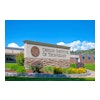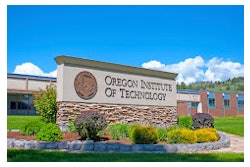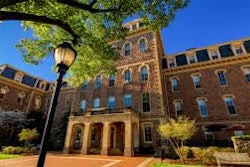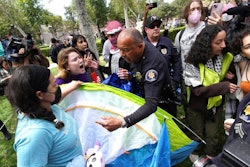Christian Onwuka had narrowed his college choices to two: San Diego State University (SDSU), in the town where he grew up, and Morehouse College, an HBCU that is all-male like his Catholic high school and would allow him to spread his wings away from home.
When the father of his 8-year-old brother died, Onwuka felt so strongly about the importance of being there to mentor his little brother that he chose SDSU and enrolled there on a Presidential Scholarship that pays his tuition.
Onwuka, who will be a senior this fall, is studying business and finance. He has immersed himself in his college’s culture, serving in multiple leadership capacities and sometimes including his brother in service activities. The aspiring CEO of a Fortune 500 company is an example of the broad and deep cultural variety that makes SDSU one of the most diverse institutions of higher education in the United States.
 Dr. Sandra Cook
Dr. Sandra CookAccording to school administrators, 52 percent of all students enrolled in fall 2017 were students of color, and students of color constituted 62.1 percent of all transfer students. For students who transfer from community college, the two-year graduation rate is 50.9 percent overall and 49.4 percent for students of color; four-year graduation rates for transfers are 85.4 percent overall and 84.8 percent for students of color.
SDSU’s efforts to attract and maintain a diverse student population begins with a recruitment strategy of reaching out and building strong relationships with prospective students at high schools and community colleges. And as much effort is devoted to engaging their parents and school counselors.
“We call them the influencers,” says Sandra Temores-Valdez, senior director of enrollment services. “We try to build strong relationships with them so they understand our requirements, and our success stories. And so that they embrace the idea of sending their students to SDSU.”
The university has a newsletter that targets prospective students and touts successes of current students regarding scholarships, internships, awards, study abroad and other inspiring information, says Temores-Valdez.
On-campus activities range from the “Freshman for a Day” each autumn for students at targeted high schools to “Harambee Weekend” each spring where admitted African-American students who have been accepted for admission the upcoming academic year can interact with Black faculty and coeds.
For families, “the main thing is cost, and will the investment be worth it,” says Temores-Vadez. “We try to communicate the value of what students are going to get through an SDSU experience.”
That involves collaboration among admissions, financial aid and academic affairs offices to make the process from application to starting as clear and simple as possible.
“We are successful recruiting and growing the number of underrepresented students through partnerships on campus,” says Temores-Valdez. “People think a recruitment office can do it on its own, but a campus has to come together for the effort…in providing an experience where we invite students on campus and help them see if it is the place for them.”
Equity is as important as access in helping students stay in school and succeed after they arrive on campus, university administrators say. Changes are routinely made to serve student needs better, such as a friendlier leave-of-absence policy, reducing the “cashier’s hold” that bars registering from $250 to $15, and requiring all freshmen and sophomores to live on campus starting in the fall.
There also are various services for veteran-related students, which includes students who are veterans or the child or spouse of a veteran, says Dr. Sandra Cook, associate vice president for academic affairs and enrollment services.
To help meet the needs of the school’s more than 4,000 veteran-related students, there is a veteran’s center with a dedicated on-site staff person. Rehabilitation counseling is available and there is a veterans house on fraternity row.
Many services, programs and initiatives are in place to help minority and underrepresented groups in particular and all students in general have a rewarding college experience and graduate in a reasonable time frame, says Cook. In 1996, then-president Steve Weber foresaw a leap in enrollment and led the institution of an interdepartmental enrollment services team to manage admissions.
SDSU has a four-year graduation rate of 39.6 percent overall and 34.3 percent for students in underrepresented groups. The six-year graduation rate has a smaller disparity of 75.4 percent overall and 73.9 percent for underrepresented groups, says Cook, noting that the six-year average is significantly higher the national average of under 60 percent.
Onwuka says the campus environment has made his undergraduate experience enjoyable. He was proud to be part of efforts to create a free-standing Black Resource Center on campus last spring.
“I’d like to see more Black students on campus, and more Black faculty,” he says. “The center will help. I look at it as a recruiting toll and a place for Black creativity to flourish and Black thoughts to be accepted and not criticized. I think our campus is becoming more aware on cultural issues because students from different communities have not been afraid to speak up and say what they think is right. There are allies at school that will hear and advocate and work on their behalf.”
LaMont Jones can be reached at [email protected].
This article appeared in the August 23, 2018 edition of Diverse and is one in a series of profiles about some of the institutions that made our Top 100 list.



















